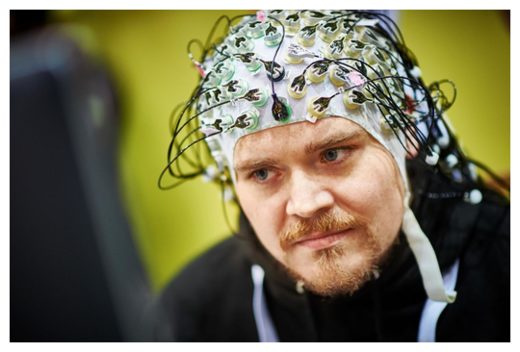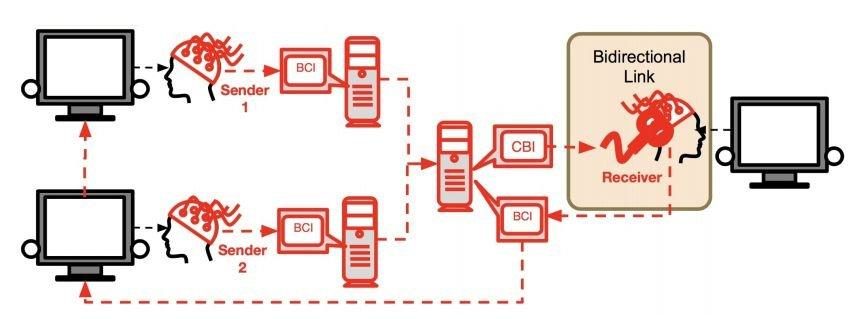The experiment itself involved three subjects: two "Senders" and one "Receiver." The Senders wore electrodes that would record the electrical impulses of their brains using electroencephalography (EEG) technology (the same technology used to diagnose, say, sleep apnea).
The Receiver was outfitted with their own set of electrodes to receive and interpret these electrical signals using transcranial magnetic stimulation (TMS), which is a technology that employs magnets to stimulate the targeted areas of the brain. It's used to evaluate brain damage following strokes and is a burgeoning therapy for treatment-resistant depression.
The crux of the experiment centered on a Tetris-like game (we know: scientists have all the fun). Falling blocks were displayed on a screen, with the objective being to rotate the blocks so they landed in a way that would create a solid line at the bottom of the screen.

By looking at the appropriate flashing light, the Senders' EEGs were sent to the Receiver. If the decision was "rotate," the EEGs triggered the Receiver's brain to create a phosphene - which is the hallucination of seeing a light flash where there isn't any. (You can see your own phosphenes when you rub your eyes or stand up too quickly.)
The results were astounding: a recorded average accuracy of 81.25% across five separate groups of subjects. Even when scientists altered one Sender's reliability by adding noise to their EEG signal, the Receiver was able to learn which Sender was more reliable and adjust accordingly.
The experiment is scalable, too. Researchers plan to repeat the study with additional participants, as well as expanding the amount of data they must share using nothing more than their brains' electrical impulses.
The implications stretch far beyond telepathic party tricks and Tetris. According to Newsweek, the writers go so far as to speculate "One could imagine 'social networks' of connected brains in the future producing innovative and creative solutions to humanity's most important scientific and societal problems, all within a socially and ethically responsible framework."
We may very well be on the cusp of crowdsourcing our human brainpower.




Reader Comments